Samsung Galaxy Z Fold6 – AI in a foldable (smartphone review)
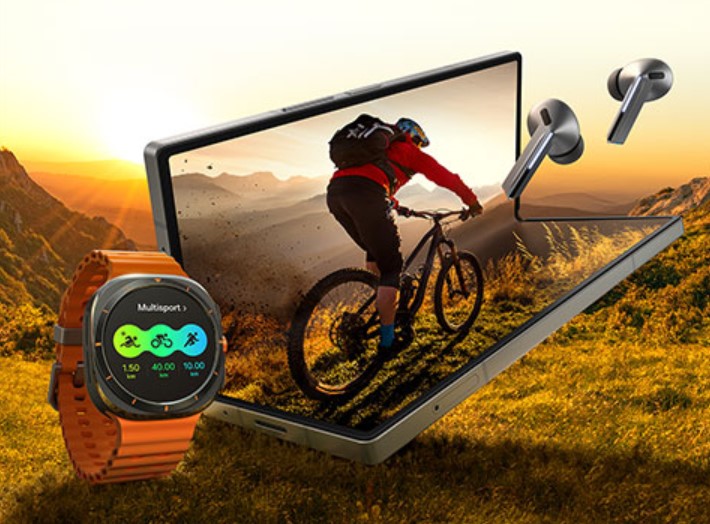
The Samsung Galaxy Z Fold6, released in July 2024, is its sixth iteration since the 2019 original. The key differences from its predecessors are the addition of Samsung AI and a 2024 processor.
Like its predecessors (at least as far back as Fold4), it has almost the same specs:
- 7.6” internal foldable AMOLED screen
- 6.3” cover screen
- 12/256GB RAM/Storage
- Qualcomm’s SD8 Gen 3 SoC (annual update)
- 50+10+12MP rear camera
- 4+10MP internal/cover selfie
- Wi-Fi 6E AXE, BT 5.3, Ultra-Wideband, USB-C 3.2 OTG supports DeX but not mountable external SSD.
- 4400mAh battery, 25W wired charge, 4.5W reverse charge (no charger supplied)
To quote John Laws, ‘When you‘re onto a good thing, stick to it’ – the old Mortein fly spray slogan from the 1930s to 1986.
And that is the problem. Like Apple, which is accused of too many model refreshes with minor annual updates, this device has been somewhat left behind. It offers little reason for Fold 4+ users to upgrade.
Why?
As we wrote last year, the OPPO Find N3 Fold – the most advanced foldable smartphone in 2023, ate the Fold5 for breakfast. It sold out globally so fast that I could not get one!
This year, the Google Pixel 9 Pro Fold – know when to fold’em, know when to hold’em is more usable and likely the thinking person’s fold of choice.
That is not meant to disparage Samsung in any way. It sells more Android phones than the other brands combined. Overall, the Samsung Galaxy Z Fold6 presents a good user experience, but in our opinion, it could be so much more.
As we wrote with the Google Pixel 9 Pro Fold, choosing a foldable means accepting any compromises dictated by the form factor. Our job is to assess these objectively so you can make an educated choice.
We won’t be covering AI features
You will find a good overview What is Samsung Galaxy S24-series AI all about? and Gemini – Google Assistant’s split personality. AI is not the primary reason to buy a Fold.
Australian Review: Samsung Galaxy Z Fold6
We use ‘Not disclosed’ where Samsung does not provide specifications, and we either use identification software or third-party information, so E&OE.
| Brand | Samsung |
| Model | Samsung Galaxy Z Fold6 |
| Model Number | SMF956B/DS |
| RAM/Storage Base | 12/256GB $2749 2/512GB $2949 12GB/1TB $3299 |
| Price base | 12/256GB |
| Warranty months | 24 |
| Tier | Premium Fold |
| Website | Product page |
| From | Samsung Online and approved retailers |
| Country of Origin | Korea |
| Company | Samsung is a South Korean multinational manufacturing conglomerate headquartered in Samsung Town, Seoul, South Korea. Samsung Electronics (the world’s largest information technology company, consumer electronics maker, and chipmaker. |
| More | Samsung publishes few meaningful specifications. Most of these come from testing and analytical software. |
| Test date | September 2024 |
| Ambient temp | 10-27° |
| Release | August 2024 |
| Other models not for Australia (Don’t buy) | Do not buy SM-F956U, SM-F956U1, SM-F956N, SM-F956W, SM-F9560 DS = Dual SIM; otherwise, eSIM and SIM |
New ratings in 2024
We use Fail (below expectations), Pass (meets expectations), and Exceed (surpasses expectations or is the class leader) against many of the items below. We occasionally give a Pass(able) rating that is not as good as it should be and a Pass ‘+’ rating to show it is good but does not quite make it to Exceed. You can click on most images for an enlargement.
We are also tightening up on grading. From now on, Pass, for example, means meeting expectations for the price bracket. We consider a Pass mark to be 70+/100 with extra points added for class-leading and excellence.
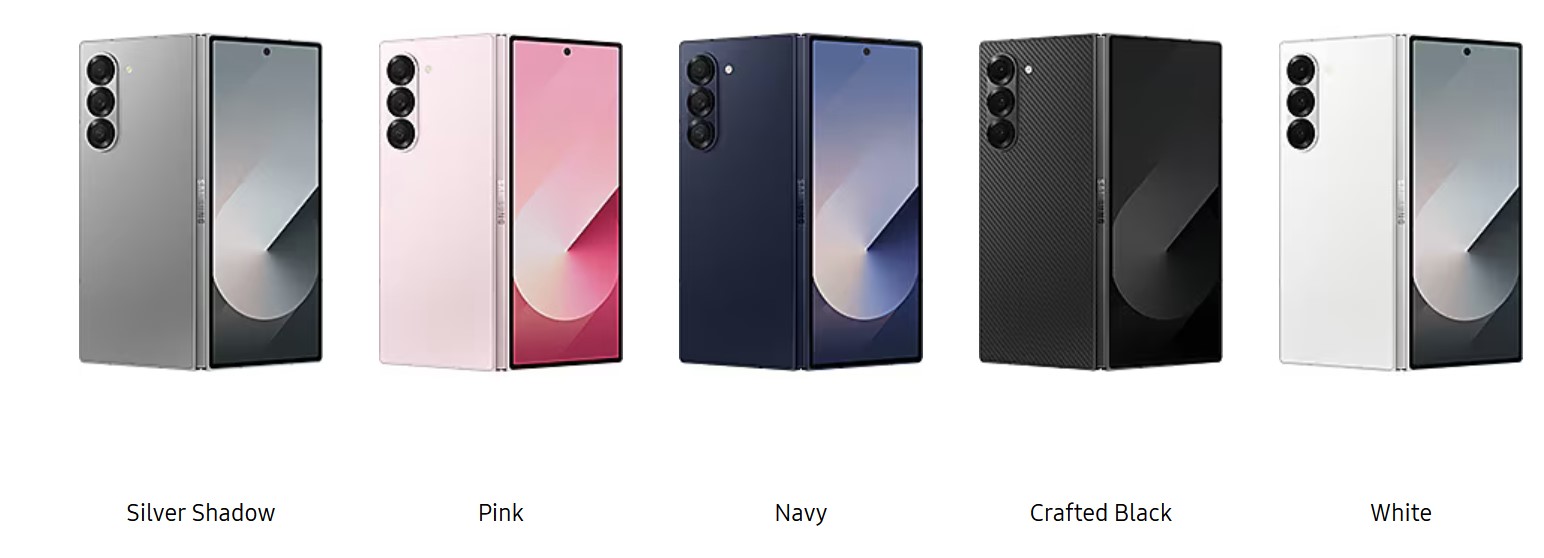
First Impression – Pass
Having followed the Z Fold from the beginning and seeing the major issues with screen cracking on the earlier models (which seem to have been cured by Fold 4), I was not a Fold aficionado. Regardless of its one-time in-warranty screen replacement policy, it is an ask too far to pay about $815 ($1030 for Fold5) outside warranty. Significantly, Samsung dropped its 400,000 fold claim because it exposed it to Australian Consumer Law warranty claims.
But the 2023 Fold5 got me thinking I could use this as I really need extra screen real estate.
Then I had an OPPO N3 Fold (differences in brackets) for a month or so
It gave me a taste of what a fold could be. Compared to the 2023 OPPO N3 Fold (specs in brackets), the 2024 Samsung Galaxy Z Fods6 came up short on:
- 8-bit HDR10+screen (10-bit Dolby Vision). Photo and image previews were off, and no Dolby Vision decode.
- PWM 120/240Hz recurring is a major issue for PWM-sensitive people (PWM 1440Hz – no issue)
- 7.6” 10.5:9 internal and 6.3” 22:11, 2376 x 968 cover screen [seen as 720p by many apps and video playback] (7.82” 2440 x 2268, 9.7:9 square internal and 6.31” 2484 x 1116 20:9 cover screen – far more usable and recognised as 1080p)
- 12/256GB RAM/Storage (16/512GB)
- Wi-Fi 6E (7),
- City/suburbs phone reception (add rural and regional)
- Slow 21W 1.5-hour charge (67W 42 minutes)
- 15 hours video loop (18 hours)
- Poor sound signature (excellent neutral signature)
- Obvious screen crease (imperceptible screen crease)
- 50+12+10MP and 10+4 selfie (53 Sony Lytia +64+48MP, 23+32MP selfie, and MariSilicon, 20-bit 18 TOPS NPU). DXOMARK rating 133 (153). 30X Zoom (120X zoom). The cameras are chalk and camembert!
Let’s stop there because you can’t get the OPPO N3 Fold anymore, and comparisons with its successor, the OnePlus Open (not sold here), make Samsung look even worse.
Again, we ask why?
Samsung has had a comfortable monopoly in Western markets. Since 2019, the phone has undergone six incremental iterations. It is not bad, but it could be far better.
Samsung Fold5 buyers are generally happy with most complaints about screen ratio (usability), hinge issues, charge times, app incompatibility/crashes, camera quality (for the price), Samsung account requirements, and ergonomics (use in hand).
Already, there have been notices of issues with Samsung Galaxy Z Fold6: broken display, hinge dust issues, phone reception (especially when unfolded—we experienced that), Wi-Fi connectivity and speed issues (ditto), camera variability (ditto), Apps not working correctly, including freezing, crashing, unresponsiveness (ditto), and battery drain (Source Android Police). Many issues should be firmware fixable, but they were also in the Fold5.
OPPO’s original Find N Fold (2021) was a good prototype. It then got it 90% right with the Find N2 (2022). The Find N3 Fold was a significant design change with larger screens, better cameras, a bigger battery, and a more petite 232g body, and got it 99% right. OPPO designs for the unforgiving Chinese market—you get one, maybe two chances! Its new OnePlus Open Fold (the next version of the N3 not sold here) is spectacular.
Google Pixel V1 was, to put it politely, a flawed prototype, but it was a good basis for things to come. Google Pixel 9 Pro Fold is substantially improved and more usable than the Samsung Galaxy Z Fold6, although it suffers from a few common issues.
Again, I make the point – if you outlay nearly three grand, know what you are buying and be prepared to live with any compromises.
Screen – Pass
It comprises a 10.5:9 ratio fold screen and a 22:9 ratio cover screen. Unlike other brands’ foldables, it persists with odd ratios and a 986 cover screen resolution (seen by many apps as 720); therefore, the image does not always fit the screen. Ditto for the internal screen.
It also persists with 8-bit/16.7 million colour screens that suffer from inaccurate photo/video preview colours, essential to photographers, videographers, and vloggers. While it supports Samsung’s HDR10+, it does not support Dolby Vision.
The screens suffer from Pulse Width Modulation dimming, and PWM-sensitive people must avoid them.
Note that the Google Pixel 9 Pro Fold uses a Samsung AMOLED and has similar issues.
On the positive side, the screens are colourful and daylight readable bright.
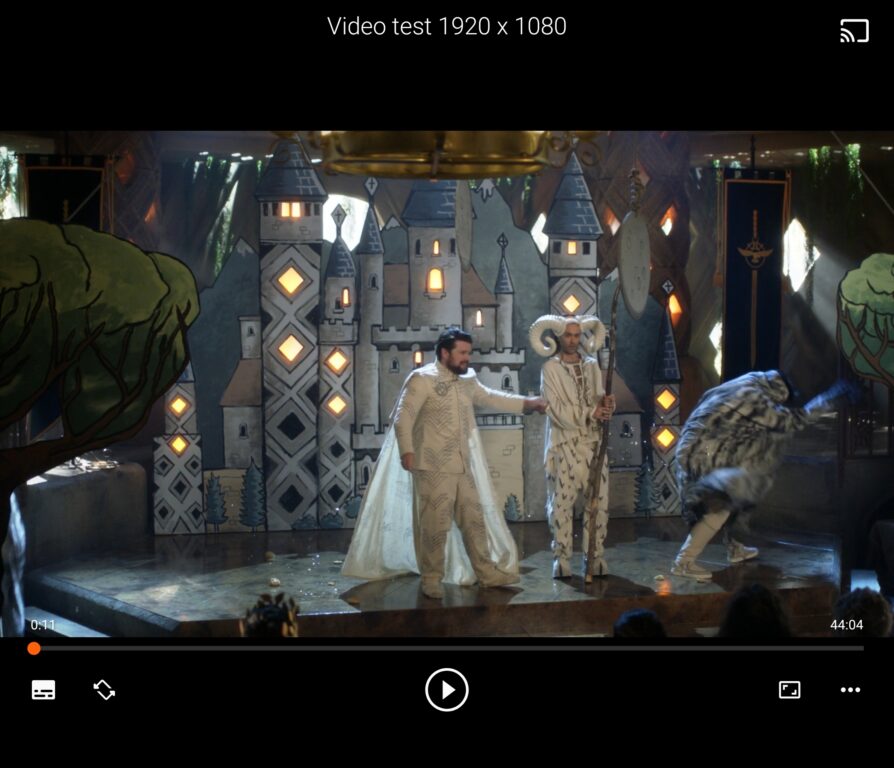
ait


Screen specs
| Screen | Internal/External cover display |
| Size | 7.6″ (rectangle)/6.3″ |
| Type | Dynamic AMOLED 2X/same |
| Flat, Curve, 2D, 3D | Flat foldable/flat |
| Resolution | 2160 x 1856/2379 x 968 |
| PPI | 373/402 |
| Ratio | 10.5:9/27:11 (approx. 22:9) |
| Screen to Body % | 0.911 |
| Colours bits | 8-bit/16.7m |
| Refresh Hz, adaptive. | Samsung claims 1-120Hz, but it appears to step from 10/24/30/48/60/90/120Hz Adaptive up to 60 or 120Hz Cover: 60/120Hz fixed |
| Response 120Hz | Not disclosed |
| Nits typical, test | Not disclosed Vivid and Natural Test 780/770 |
| Nits max, test | Not disclosed. Test HBM: 1368/1300 Test Peak HDR 2% window: 2728/2635 |
| Contrast | Infinite |
| sRGB | Not disclosed Test Natural mode: 99%/97.5% |
| DCI-P3 | Not disclosed Test Vivid mode: 99%/97% |
| Rec.2020 or other | RGB and temperature adjustment |
| Delta E (<4 is excellent) | Not disclosed. Test 1.8/3.5 |
| HDR Level | Internal HDR10+ External – No |
| SDR Upscale | No |
| Blue Light Control | Yes |
| PWM if known | Not disclosed 120/240/480Hz cycle. PWM sufferers should avoid this as it can cause nausea and discomfort. |
| Daylight readable | Yes |
| Always on Display | Yes |
| Edge display | Yes |
| Accessibility | Full suite of enhancements |
| DRM | Internal screen 1080p SDR (some HDR streaming services) Cover screen 720p SDR. |
| Gaming | Game mode, but the screen is too soft for game use. |
| Screen protection | Internal: The screen protector is plastic and replaceable (Samsung can only fit it). Mohs hardness is 2 – a fingernail can scratch it. External: Gorilla Glass Victus 2 |
| Comment | Despite the fold-flat hinge, the internal screen still has a noticeable crease, which is made worse by constant opening and swiping left/right/up/down. Samsung persists in using an 8-bit/16.7M colour screen while others use 10-bit/1.07 billion colours. |
Processor – Exceed
Samsung uses the Qualcomm SD8 Gen 3 SoC instead of its Exynos 2400 (the Google Pixel Tensor G4 SoC is loosely based on this). There is no more powerful SoC.
But do you need a V12 Turbo engine in a fold with its inherent form factor limitations? If you use AI extensively, then yes. Although, Google says (and we tend to agree) that its Tensor G4 is all you need.
AI benchmarks
We have run the new AI benchmarks, but they bear no resemblance to the official trillion operations per second (TOPS), so they are more for your interest. We have also benchmarked the Google Pixel 9 Pro Fold.
And we are gobsmacked. Some of those Samsung benchmarks are too challenging to accept at face value. For example, AiTuTu shows Samsung with 15X more AI power than the Pixel. Yet Geekbench AI NNAPI backend, shows the Pixel has nearly 6X AI capacity. We will be testing more, so only consider the results as an indication.
| Pixel 9 Pro Fold | Samsung Galaxy Z Fold6 | |
| Geekbench 6 single/multicore | 1750/3017 | 2230/6830 |
| Geekbench AI NNAPI | 270/4148/6019 | 444/431/948 |
| AiTuTu | 97,494 | 1,481,101 (this seems way too high) |
| AI Benchmark 5 | 765 | 3161 (ditto) |
| GFLOPS | 14.74 | 21.40 (accurate) |
| GINOPS | 19.14 | 27.15 (accurate) |
| Open CL | 6587 | 12,116 (accurate) |
| Vulkan | 7043 | 14,016 (accurate) |
Processor Specs
| Brand, Model | Qualcomm SD 8 Gen 3 |
| nm | 4nm made by TSMC N4P (not Samsung) |
| Cores | 1 x 3.39GHz & 3 x 3.1GHz & 2 x 2.9GHz & 2 x 2.2GHz |
| Modem | X75 4×4 MIMO Sub-6Ghz |
| AI TOPS OR Multi-thread Integer Operations Per Second (INOPS) GINOPS = billion | On charge Geekbench AI CPU backend 2429/2511/3758 Geekbench A! GPU backend 958/1272/1278 Geekbench AI NNAPI backend 444/431/948 Geekbench AI QNN backend 426/16301/39327 AiTuTu: 1,481,101 AI Benchmark 5: 3161 GFLOPS: 21.40 GINOPS: 26.15 |
| Geekbench 6 Single-core | 2230 |
| Geekbench 6 multi-core | 6830 |
| Like | Processor full Benchmarks |
| GPU | Adreno 750 (1GHz) |
| GPU Test | |
| Open CL | 13290 |
| Like | Fastest available. |
| Vulcan | 14016 |
| RAM, type | 12GB LPDDR5X |
| Storage, free, type | 256GB base level 512GB as tested (445GB free) |
| micro-SD | N/A |
| CPDT internal seq. Read MBps sustained | 2570 Jazz maximum 3029.59 |
| CPDT internal seq. write MBps sustained | 1170 Jazz Maximum 1454.55 |
| CPDT microSD read, write MBps | N/A |
| CPDT external (mountable?) MBps | Won’t test – seen as external OTG storage but can’t mount as internal storage. |
| Comment | Without mountable external storage, videographers and vloggers will soon run out of space. |
Throttle test – Passable
The test lasts 15 minutes under 100% load (like 4K video recording/editing/rendering or some games). Samsung has throttled the SoC by at least 10% over the Galaxy S24 Ultra (S24U) to better manage thermal issues.
| Max GIPS | 384028 (this is about 10% lower than S24U) |
| Average GIPS | 303382 |
| Minimum GIPS | 224272 |
| % Throttle | 30% |
| CPU Temp | 50° |
| Comment | It appears that Samsung has already throttled the SoC by about 10% to improve heat management. This is acceptable throttling for this SoC for typical users. The rear top right panel reaches 50° near the camera. |
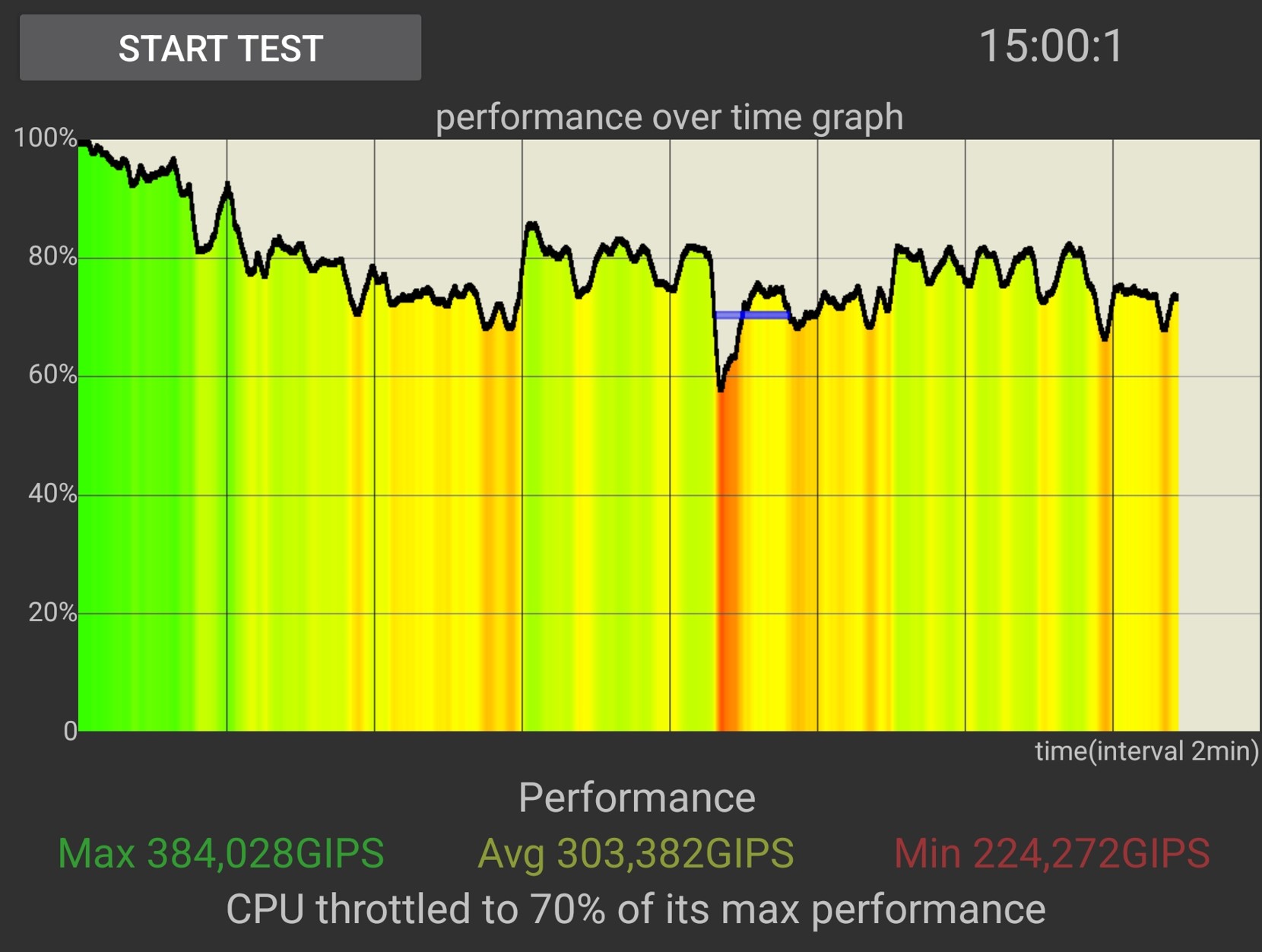
Comms – Pass
While it has everything you need, it is not everything you expect of a flagship device. Wi-Fi 6E means maximum connect speeds of 2500Mbps (versus >4000Mbps), and the USB-C 3.2 Gen 1 is the slower 5Gbps speed and is not fully implemented to support mountable external storage.
The SoC supports Wi-Fi 7 (4000Mbps) and USB-C 3.2 Gen 2 10Gbps, so we have to ask why it hasn’t been implemented.
We also had highly variable results. We would connect to a 6Ghz band, which would revert to 5Ghz during the test. We ran tests a dozen times to get one good one.
| Wi-Fi Type, model | Wi-Fi 6E AXE HE160 This is a major disappointment, considering the SoC supports Wi-Fi 7 as implemented on the S24 Ultra. |
| Test 2m -dBm, Rx/Tx Mbps | -28/1200/2500 (this should be over 4000) |
| Test 5m | -41/1200/2500 |
| Test 10m | -51/1200/1858 |
| BT Type | 5.3 BLE |
| GPS single, dual | Dual to 3M |
| USB type | USB-C 3.2 Gen 1 5Gbps |
| ALT DP, DeX, Ready For | Supports USB-C to USB-C or HDMI connection to a TV or monitor. |
| NFC | Yes |
| Ultra-wideband | Yes |
| Sensors | |
| Accelerometer | Yes – combo with Gyro |
| Gyro | Yes – combo with Gyro |
| e-Compass | Yes |
| Barometer | Yes |
| Gravity | |
| Pedometer | |
| Ambient light | Yes |
| Hall sensor | Yes |
| Proximity | Yes |
| Other | Fingerprint sensor |
| Comment | Apart from the disappointing Wi-Fi 6E AXE speeds and partial USB-C implementation, it has all the necessary sensors. |
As you can see below it suffers at 10m on the 6GHz band.

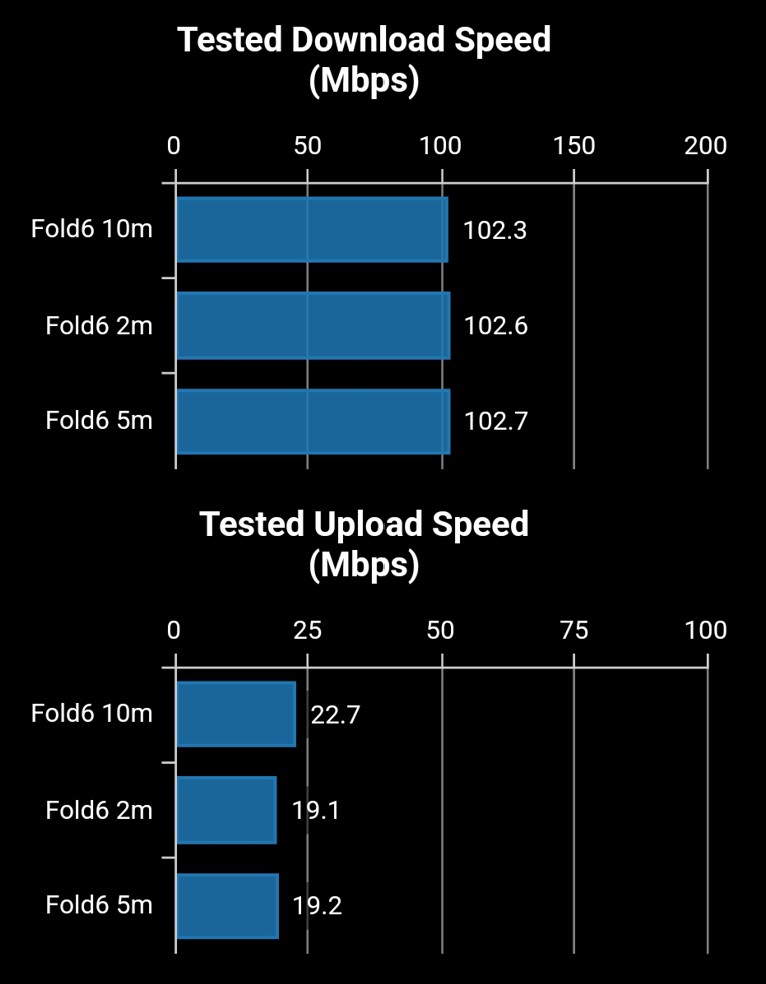

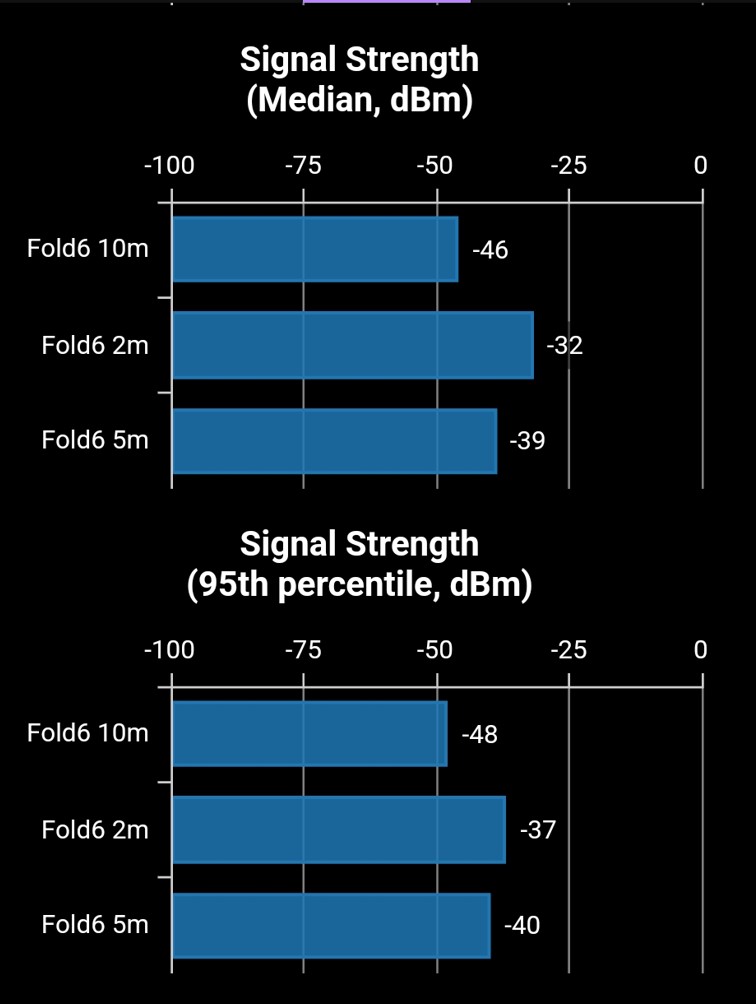
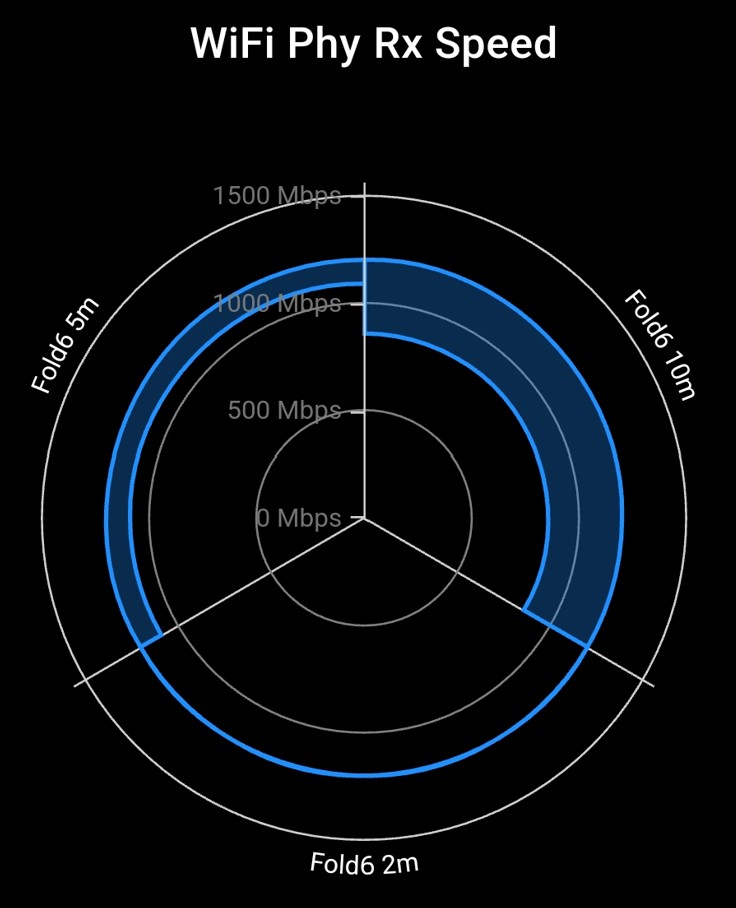
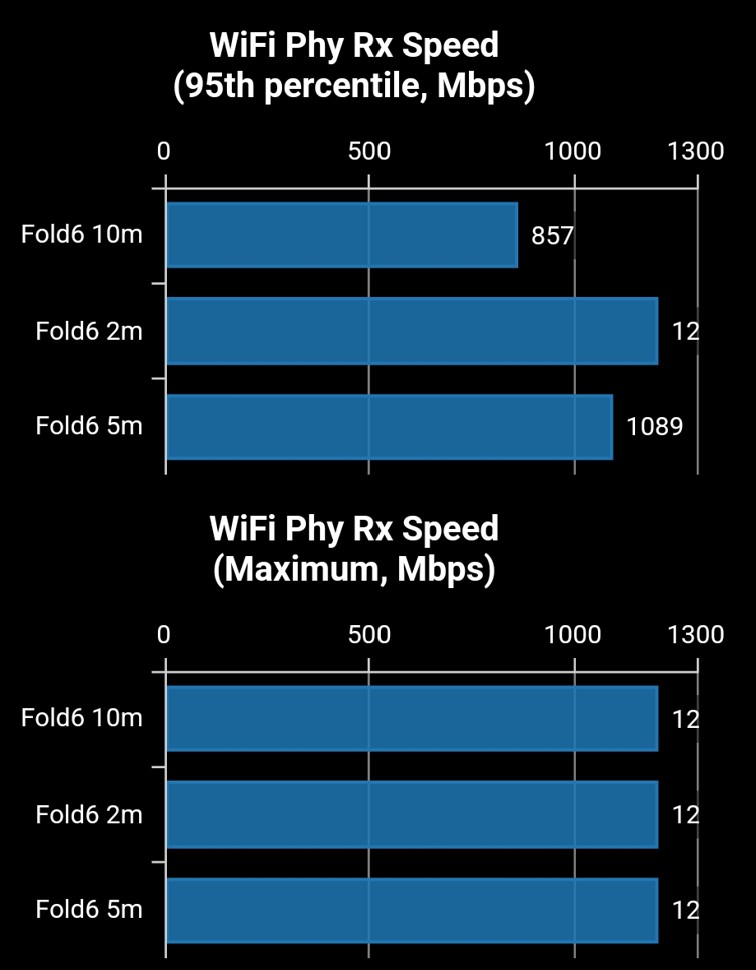

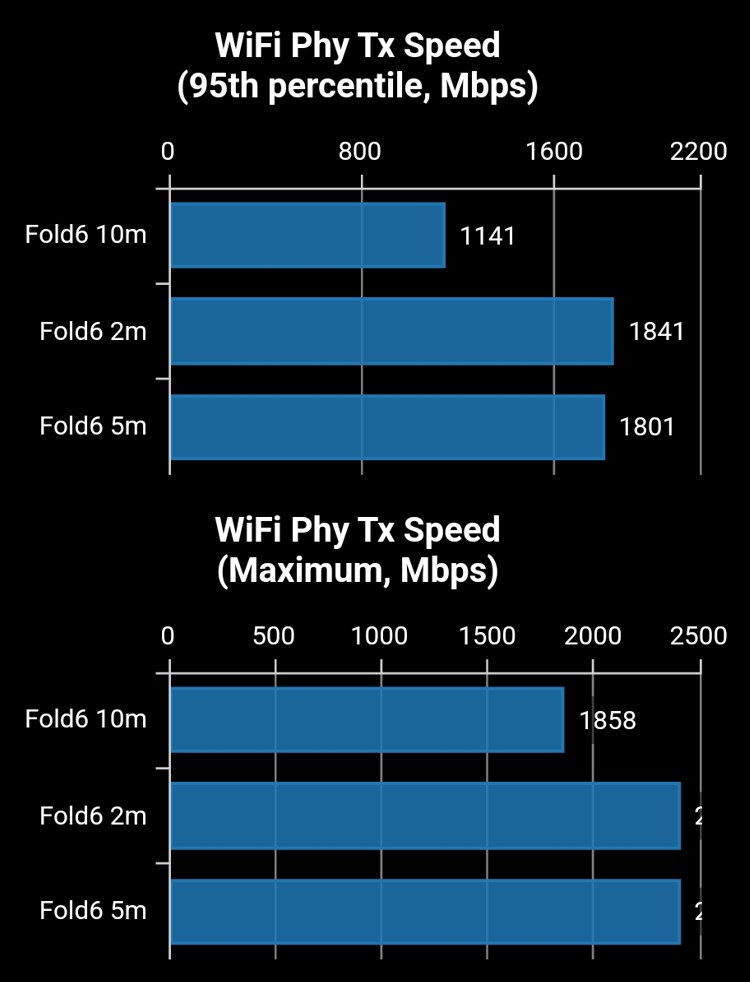
4/5G – City and Suburbs use only – Pass
This is a major disappointment for us as a) the Qualcomm modem usually finds all four test towers at usable strengths, and b) the results vary wildly.
Download/upload speeds were well below average. It only found two of four towers; the second varied between 31.6fW and 1.6pW. We can only give it a city and suburb rating or for areas with good tower coverage. 5G speeds were unusable.
Users have complained that reception is not nearly as good as the Fold5, which we said, “We rate it suitable for major cities, suburbs, regional cities, and rural or remote areas. We would be surprised if Telstra did not award it a Bluetick.”
We re-ran the test several times with the Fold open and closed—the latter gave the ‘best’ results below. We also ran the Google Pixel 9 Pro Fold tests simultaneously as a control. They were consistent, ruling out any environmental issues.
4/5G specs
| SIM | Dual SIM or single SIM and eSIM |
| Active | DSDA (dual sim, dual active – assumed as the Soc supports it) |
| Ring tone single, dual | Single |
| VoLTE | Carrier dependent |
| Wi-Fi calling | Carrier dependent |
| 4G Bands | B1, 2, 3, 4, 5, 7, 8, 12, 13, 17, 18 19 20, 25, 26, 28, 38, 39, 40, 41, 66 |
| Comment | All Australian and most world bands |
| 5G sub-6Ghz | N 1, 2, 3, 5, 7, 8, 12 20, 25, 26, 28 66 |
| Comment | All sub-6Ghz and 5G low bands |
| mmWave | No |
| Test Boost Mobile, Telstra | |
| DL/UL, ms | 17.3/8.9/30ms (well below average – consistent results over a week) |
| Tower 1 -dBm, fW or pW | -77 to -105 and 20pW to 31.6fW. The majority of the tests were 1.3 to 4pW. |
| Tower 2 | -88 to -108 and 1.6pW to 15.8fW |
| Tower 3 | No |
| Tower 4 | No |
| Comment | It did not have as strong a signal as expected. It could not find the third and fourth transmission towers. It is suitable for city, suburb, and regional use with good tower coverage. This is highly unusual for a Qualcomm modem when the Fold5 had excellent tower reception. |
Battery – Pass
First, a brickbat—no charger is supplied—and it loses points for that. The rationale is that you can use any PD or PPS charger to stop e-waste. Second, it only has a 21W cable and 7.5W Qi charge, characteristic of the fold format to manage heat issues.
Typical users will get 18-24 hours between charges. Power uses will get 5-10 hours.
Battery specs
| mAh | 4400mAh (test 4273) Two batteries in serial Battery 1: 8.96Wh/2310mAh (test 9.23Wh/2380mAh) Battery 2: 7.6Wh/1960mAh (test 7.83Wh/2020mAh) Rated maximum charge 9V/2.77A/24.93W |
| Charger, type, supplied | Not supplied. Samsung 25W charger has 5V/3A/15W or 9V/2.77/24.93W and PPS 3-3-5.9V/3A or 3.3-11V/2.25A. Suggest any GaN PD Charger >30W and a 3W (or 5W) cable. |
| PD, QC level | While the SoC can charge at 45W, the Samsung Galaxy Z Fold6 is limited to a maximum of 25W. It tends to charge at 9V/2A/18W. |
| Qi, wattage | QC 1.0 15W (should have been 2.0). It requires a Samsung Qi charger to achieve the best charge speed—charges up to 7.5W. |
| Reverse Qi or cable. | Supports 4.5W reverse wireless charge |
| Test (60Hz or adaptive screen) | Adaptive |
| Charge % 30mins | 0.5 |
| Charge 0-100% | 1 hour 30 minutes |
| Charge Qi, W Using Belkin Boost Charge 15W fast wireless charge | 4 hours |
| Charge 5V, 2A | Approx 5 hours |
| Video loop 50%, aeroplane | 15 hours 21 minutes |
| PC Mark 3 battery | 17 hours and 12 minutes Accubattery 17 hours |
| GFX Bench Manhattan battery | Out-of-memory error |
| GFX Bench T-Rex (games) | 410.3 minutes (6.84 hours) 6580 frames |
| Drain 100-0% full load screen on | 5 hours 40 minutes |
| mA Full load screen on | 1500-1750mA |
| mA Watt idle Screen on | 285-350mA |
| Estimate loss at max refresh | Tested on Adaptive mode. Using the cover only gives about 1-2 hours extra time. |
| Estimate typical use | It should give a full day for typical users and 8 hours for heavy users. |
| Comment | Carry a charger (shame Samsung does not provide one). |
Sound – Pass
It is a pure Qualcomm Aqsitic setup (Fold5 used two additional amps for its stereo speakers) and has suffered accordingly.
It has an earpiece at the top of the cover screen that does not work when the Fold is open. It then has matched up/down-firing speakers that fire sideways for a good sound stage when open in landscape mode. But the speakers are on the short sides of the cover screen, where you usually hold the phone when viewing, and your hands can easily cover them. Sure, you can turn it upside down, but then you are holding your hands over the camera sensors.
| Speakers | Top earpiece external cover. Matching top and bottom-side-firing in landscape mode. |
| Tuning | Not disclosed. Presume AKG |
| AMP | Uses a Qualcomm Aqsitic amp and DSP. |
| Dolby Atmos decode | Yes, downmix to two speakers. |
| Hi-Res | UHQ upscaler and can accept 24-bit/96kHz audio. |
| 3.5mm | No |
| BT Codecs | SBC, AAC, aptX, LDAC, and Samsung Scalable Codec. |
| Multipoint | Yes |
| Dolby Atmos (DA) | Yes – auto, movie, music, voice and games mode |
| EQ | Balanced, Bass Boost, Smooth, Dynamic, Clear, Treble boost and custom. |
| Mics | One mic is at the bottom, and triple mics are at the top for stereo recording and noise reduction. It works well for hands-free use in portrait mode. |
| Test dB – all on EQ flat DA off | |
| Volume max | 82 (good but not overly loud) |
| Media (music) | 80 |
| Ring | 80 |
| Alarm | 80 |
| Notifications | 80 |
| Earpiece | 55 |
| Hands-free | Good hands-free with noise cancellation. |
| BT headphones | Excellent left-right separation and DA makes quite a difference with DA content. HAC rating M3/T3 for hearing enhancements. |
Sound signature – Pass
It is like the Fold5, but using Qualcomm Aqsitic amps means a loss of ‘fidelity’ compared to the Fold5’s dual amps. There is a tiny bit of mid-bass, some high bass, relatively flat mid, and recessed treble.
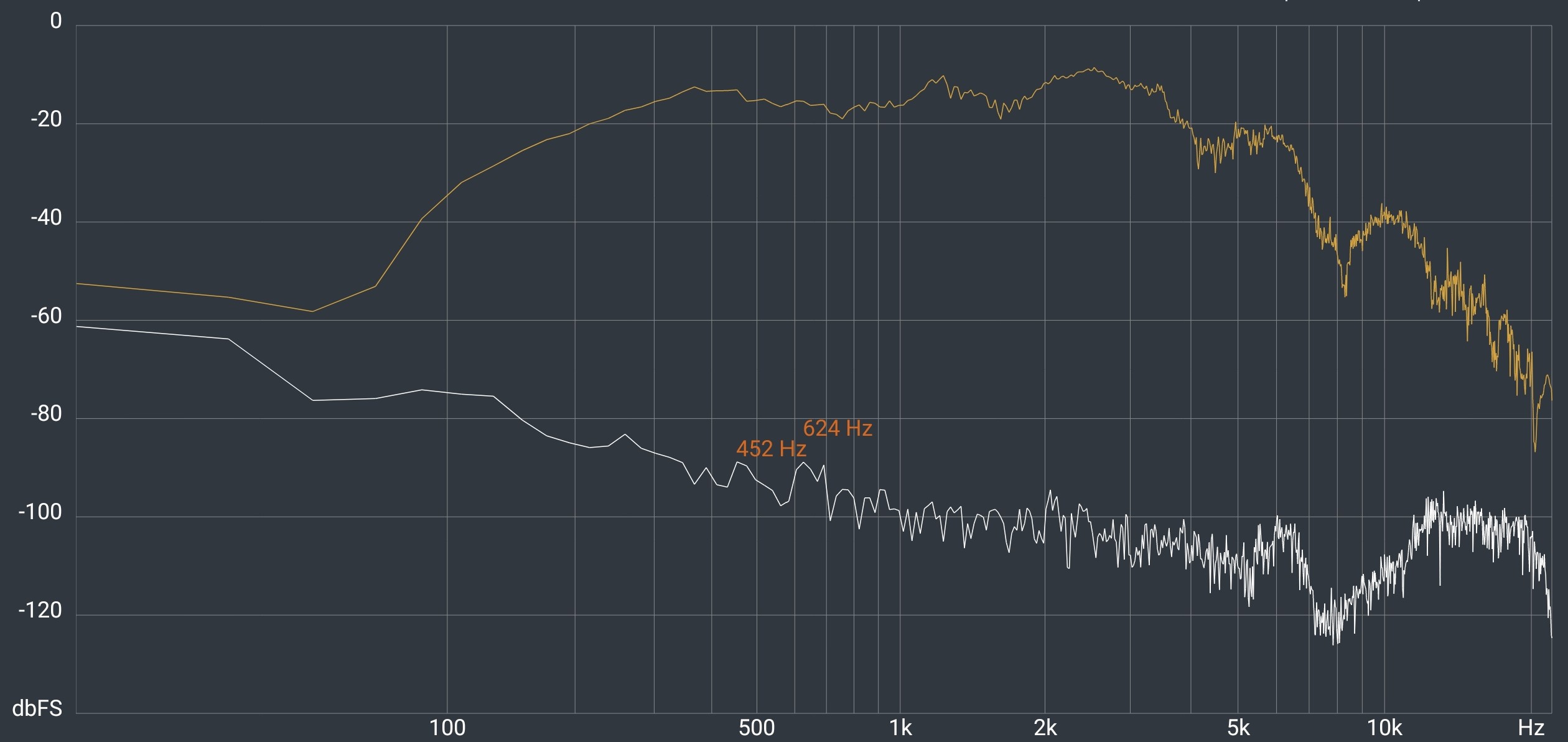
The result is decent clear voice but music lacks bass, vitality and dynamism.
| Deep Bass 20-40Hz | No |
| Middle Bass 40-100Hz | No |
| High Bass 100-200Hz | Building linearly from 100-500Hz |
| Low Mid 200-400Hz | Building |
| Mid 400-1000Hz | Flat |
| High-Mid 1-2kHz | Flat |
| Low Treble 2-4kHz | Flat |
| Mid Treble 4-6kHz | Sudden dip to 6kHz |
| High Treble 6-10kHz | Steady decline to 20kHz |
| Dog Whistle 10-20kHz | Steady decline to 20kHz |
| Sound Signature type | It has a mid-sound signature (bass recessed, mid boosted, treble recessed)—suitable for clear voices but not for music. As it lacks bass, the music feels flat, lacking air or vitality. |
| Soundstage | 2D is about as wide as the phone, and there is no obvious speaker bias. DA gives it a slightly wider 10cm soundstage but no 3D height. |
| Comment | It is disappointing for a premium handset. You expect it to have at least some in 100-200Hz bass – no. It is easy to get a decent mid-high treble that gives a feeling of air and directionality, but instead, we get treble that gives the music a harshness. |
Build – Pass+
Samsung is synonymous with well-made gear. This looks and feels prestigious in every way. However, when folded, it is not 12.1mm but 18mm with the camera bump (most phone measurements ignore this).
It also has sharper sides and corners than the Fold5, and despite losing 10g (28.3g=1oz), it feels heavy in the pocket. Add a $169 S Pen case at 40g and several more mm thicknesses to make it quite heavy.
It has an IP48 rating. The 4 means effective against >1mm particles characterised by ‘Most wires, slender screws, large ants, etc.’ It is a rubbish rating in that it does not protect against <1mm particles like pocket lint, dust, etc. Have a look at the JerryRig video below.
We also need to point out that while the SoC is a gaming powerhouse, the screen has a Mohs hardness of 2 – a fingernail can score it. It is not a gamer’s screen.
| Size (H X W x D) | Flat: 153.5 x 132.6 x 5.6 plus camera bump Fold: 153.5 x 68.1 x 12.1 plus camera bump |
| Weight grams | 239g |
| Front glass | Samsung plastic protector – foldable AMOLED Mohs hardness 2 (fingernail) |
| Cover glass | Gorilla Glass Victus 2 – Mohs hardness 6 |
| Rear material | Gorilla Glass Victus 2 |
| Frame | Armor Aluminium |
| IP rating | IP48 1.5m for 30 minutes. Water damage is not covered by warranty. |
| Colours | Silver Shadow Pink Navy Crafted Black White |
| Pen, Stylus support | S-Pen for Fold (a special retractable tip to minimise damage to the soft screen) |
| In the box | |
| Charger | No |
| USB cable | 3W cable |
| Buds | No |
| Bumper cover | No |
| Comment | We disapprove of not providing a charger and selling it for $50 more. |
JerryRig durability test (front entry via screen makes it a write-off).
IFIXIT (Samsung Galaxy Z Fold6 starts 2:28).
Android 14 with seven more to come – Exceed
Google raised the bar with seven years of operating system upgrades and security patches. Samsung has matched that.
UI 6.1.1 (for folds) is well done. It handles multitasking well and is overall more usable than pure Android. But it is getting bloated with multiple menu levels and some confusing options.
Android users will find that Samsung has an almost complete set of Google apps (alternatives to Gmail, Phone, Calendar, Contacts, Photos). These make it easy to use Samsung backup but very hard to back up to your Google account or go back to another Android phone. We recommend using Google apps whenever you can.
Starting 25 September 2024, Samsung will require you to log into your Samsung Account to use Samsung apps, services, backup, or AI features. This involves agreeing to some 40,000 legalese words in ten nested policies with privacy implications. It is in addition to Google’s 8,000-word simple English terms, which are easier to accept.
And possibly starting by the end of 2025, there will be a monthly charge to use certain AI features.
Android specs
| Android | 14 |
| Security patch date | 1 June 2024 (current) |
| UI | One UI 6.1.1 |
| OS upgrade policy | 7 |
| Security patch policy | 7 |
| Bloatware | Samsung alternative to Google (some may require a subscription) |
| Other | Selection of Galaxy Apps. Consumer Advice: If you intend to use other Android brands in the future, use Google Apps rather than locking into the Samsung ecosystem. |
| Comment | Samsung is following Apple’s lead. It is now almost impossible to use the device without a Google account (8,000 words and normal for any Android) and a Samsung account (40,000 words in ten nested policies), which has privacy implications. Many of the AI features are locked to the account, and Samsung has indicated that monthly fees may apply for AI features at the end of 2025. |
| Security | |
| Fingerprint sensor location, type | Ultrasonic Under glass (9/10) |
| Face ID | 2D |
| Other | Knox and Secure folder |
| Comment | One of the more secure Android devices |
Samsung Galaxy Z Fold6 rear camera – Pass
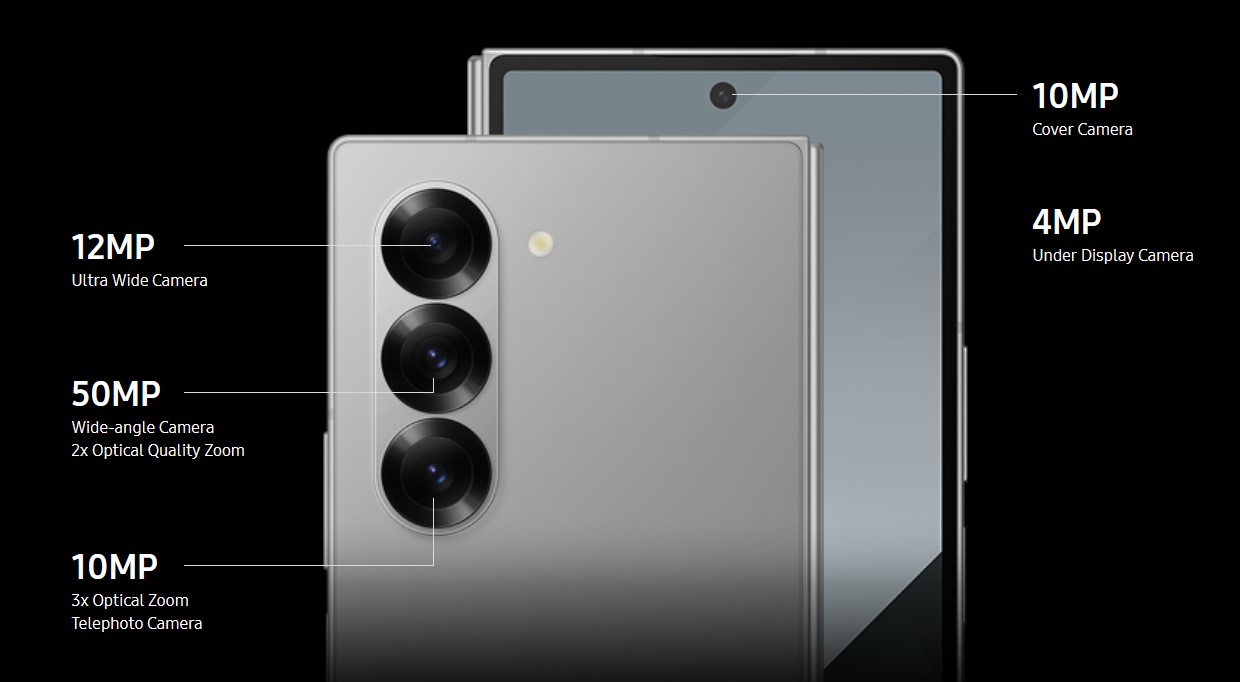
DXOMARK has a full camera ranking, rating it 133, and the Fold5 was 128. As it essentially uses the 2023 Fold5 sensors, the more powerful SoC AI makes the difference.
To put this in perspective:
- Google Pixel 9 Pro XL (best cameraphone in Australia) 158
- OPPO Find X7 Ultra 157
- Apple iPhone 15 Pro Max 154
- Google Pixel 9 154
- Google Pixel 8 148
- Apple iPhone 14 Max 146
- Motorola Edge 50 Ultra 146
- Samsung S24 Ultra SD8 Gen 3 144
- Pixel 9 Pro Fold 141
- Samsung Galaxy Z Fold6, iPhone 14 and Pixel 6/7 133
Buyers should expect the best camera for the price, but the fold format has space issues dictating smaller sensors.
The average photo mark was due to the following:
- Exposure issues
- Autofocus
- Noise
- Preview
Video issues:
- Exposure
- Colour
- Autofocus
- video noise
- Artifacts, ringing
In our tests, it performed well as a point-and-shoot camera, but to the trained eye, it did not live up to its flagship status or price.
Test Photos



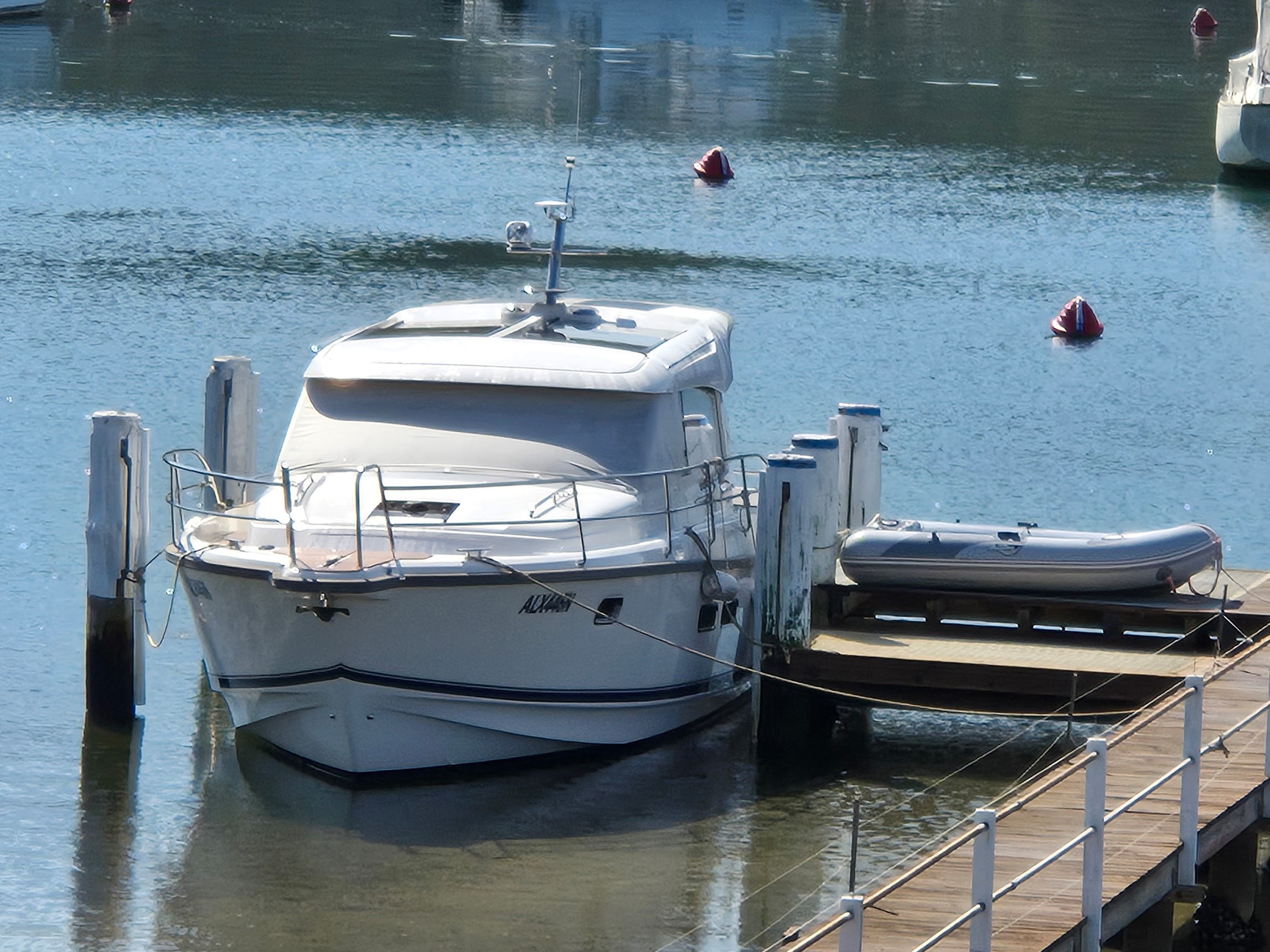
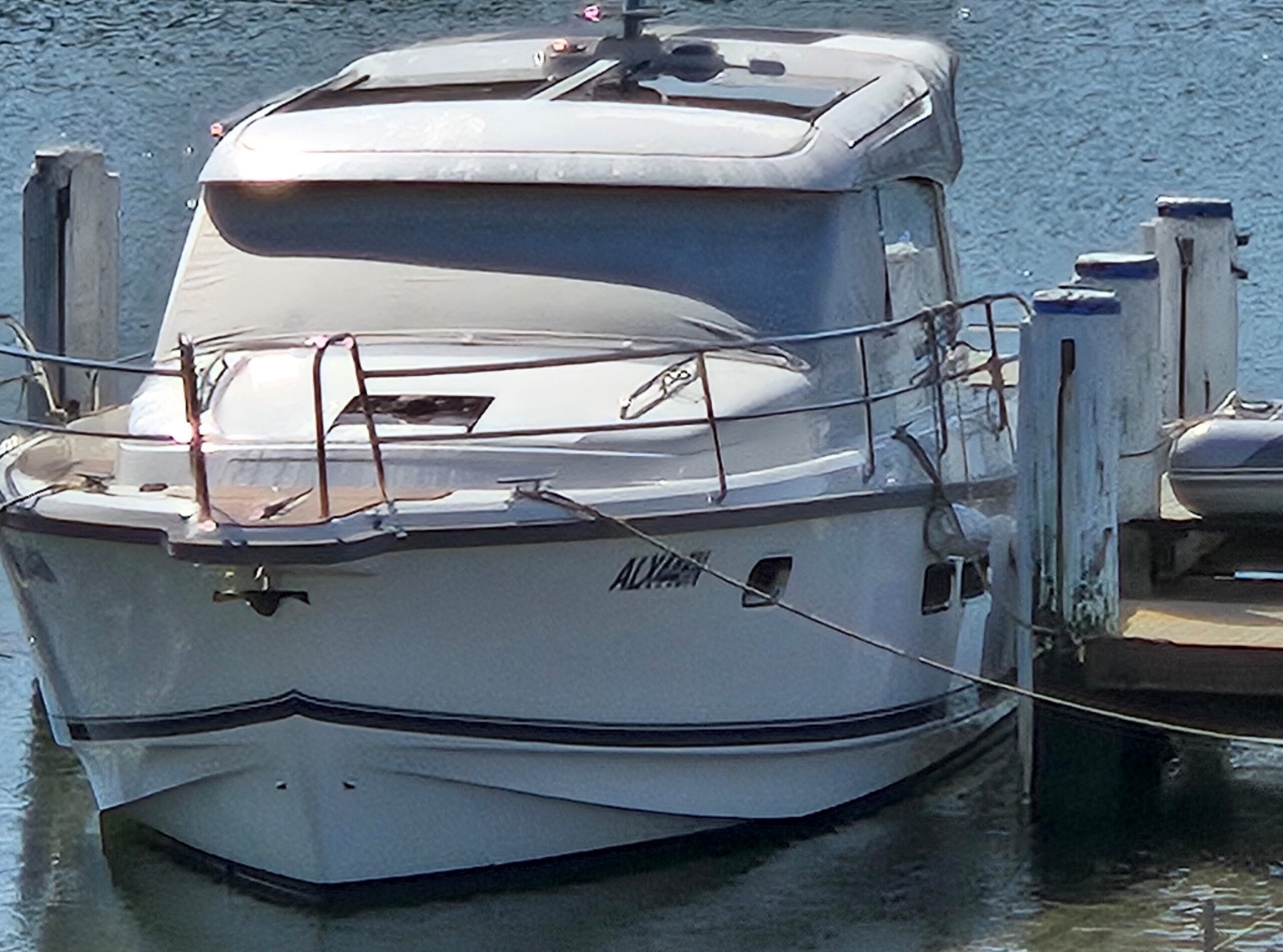
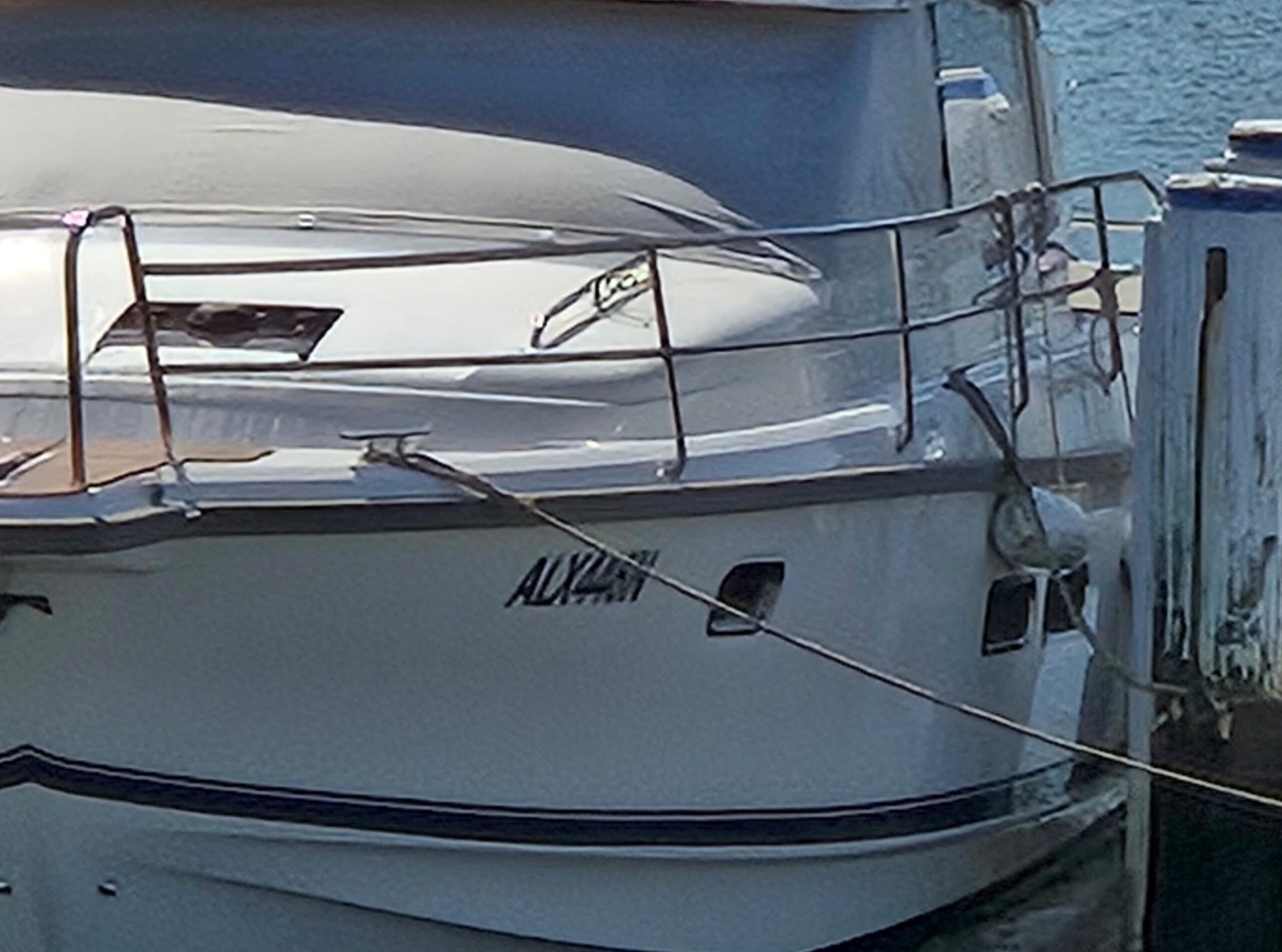


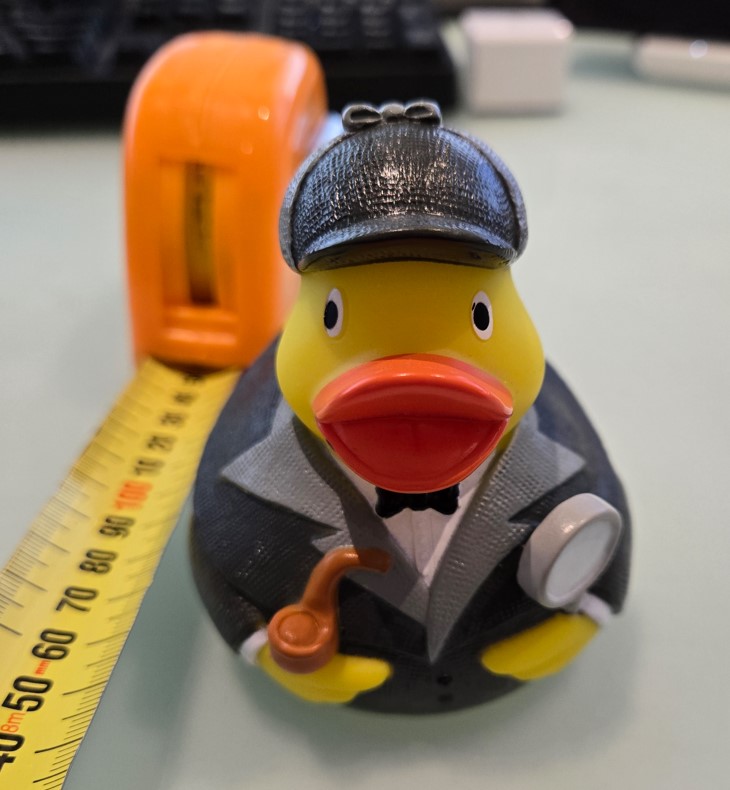
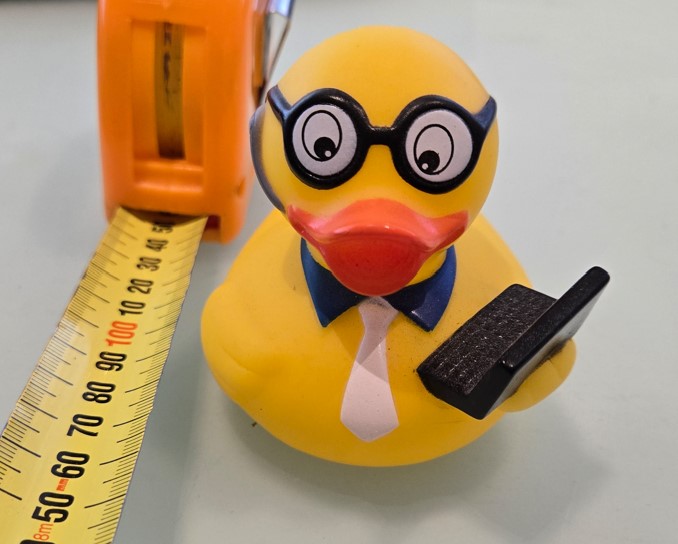


Samsung Galaxy Z Fold6 rear camera specs
| Rear Primary | Wide |
| MP | 50MP bins to 12.5MP |
| Sensor | Samsung S5KGN3 Supports binning to 12, 12.5 and 10MP |
| Focus | PDAF |
| f-stop | 1.8 |
| um | 1 bins to 2 |
| FOV° (stated, actual) | 74.1 to 86.7 |
| Stabilisation | OIS/EIS |
| Zoom | 8x digital |
| Rear 2 | Ultra-wide |
| MP | 12MP |
| Sensor | Samsung S5K3LU |
| Focus | FF |
| f-stop | 2.2 |
| um | 1.12 |
| FOV (stated, actual) | 123° (105.6 to 117.5) |
| Stabilisation | No |
| Zoom | No |
| Rear 3 | Telephoto |
| MP | 10MP |
| Sensor | Samsung S5K3K1 |
| Focus | PDAF |
| f-stop | 2.4 |
| um | .9 |
| FOV (stated, actual) | 23° |
| Stabilisation | OIS |
| Zoom | Optical Zoom 3x Hybrid Zoom 2x (Enabled by Adaptive Pixel sensor) Digital Zoom up to 30x |
| Video max | Primary sensor 8K@30fps 4K@30fps with OIS/EIS |
| Flash | Single |
| Auto-HDR | Yes |
| QR code reader | Yes |
| Night mode | Yes |
Samsung Galaxy Z Fold6 selfie
It has a 4MP (16MP binned) sensor under the right top cover screen. Concealed cameras are fine for FaceTime but not for selfies.
The cover selfie is 10MP. It suits single selfies (not group) and matches the skin tone reasonably. This is where the screen preview colour mismatch with the results is most evident.
| MP | Cover/Internal Under glass |
| Sensor | Sony IMX374/We suspect it is a 16MP binned to 4MP Sony IMX471 |
| Focus | FF/FF |
| f-stop | 2.2/1.8 |
| um | 1.22/1 bins to 2 |
| FOV (stated, actual) | 75 to 87.6° |
| Stabilisation | No |
| Flash | Screen fill/No |
| Zoom | No/No |
| Video max | Not disclosed – expect 4K@60/not disclosed. |
| Features | |
| Comment | DXOMARK rating 133 is almost the same as the Fold5 (128) It equals the original Pixel Fold and Galaxy S24/+ (Exynos versions). The average photo mark was due to: Exposure issue Autofocus Noise Preview. Video issues: Exposure Colour Autofocus video noise Artifacts, ringing In our tests, it performed well as a point-and-shoot camera, but to the trained eye, it did not live up to its flagship status or price. |
CyberShack’s view – The Samsung Galaxy Z Fold6 is a foldable for those who need it
I wrote about the Fold5, ‘I was not really comfortable with using this device as my daily drive. I love the screen real estate, but it makes the phone bulky, heavy, and prone to accidental drops. And it costs more than I am comfortable with’.
The Fold6 is a good phone, but it could be much better. Galaxy Z Fold owners either don’t know or care that there is much better value and performance in the Samsung Galaxy S24 Ultra – the ultimate Android smartphone.
Rating conundrum
When we rate a smartphone, we usually do so in a category loosely related to price—what we expect from entry-level, mid-range, premium, etc. That way, we avoid the trap (which most reviewers fall into) of comparing everything to an uber-expensive iPhone or Galaxy S24 Ultra.
If we review it on price, there are far better glass slabs with superb cameras, more power, larger storage, longer battery life, etc. Ditto. If we review it on ‘speeds and feeds’ as there are phones from around $1000 with similar flagship processors.
So it boils down to what you expect a Fold to do.
The answer is simple. You expect it to have a large screen, a reasonably premium set of features, a reasonable camera, decent battery life, and you don’t really care what is under the hood. It is all about the screen.
We rate this as a Fold and all the benefits/compromises that entails.
Ratings
| Ratings | The new rating system uses 70/100 as a pass mark. |
| Features | 80 |
| It has a similar camera to Fold5 but better AI for slightly better images. The SD8 Gen 3 processor specs appear to have been downgraded for thermal management, and Wi-Fi 6E is a backward step. | |
| Value | 70 |
| It does not get a higher rating because there are better-performing, more fully featured glass slabs. Plus, screen replacement could be expensive. | |
| Performance | 80 |
| You expect 100/100, but it has been throttled to avoid heat issues, less-than-perfect phone reception, slowish AI, 8-bit screen image preview mismatch screen, no mountable SSD, and more. It is the fastest processor at present, but the foldable format hobbles it. | |
| Ease of Use | 80 |
| The folding screen is easy enough to use, but how often do you open a spreadsheet on your phone? Even in DeX mode, it is relegated to a touchpad. It is very much a two-handed use device and particularly awkward for left-handers. Excellent 2+7+7 Warranty/OS Upgrades/Security patches. Some will rightly be concerned about the almost mandatory Samsung account privacy policies. Use Google Apps if you want maximum upgradability if you want to leave Samsung’s ecosystem. | |
| Design | 80 |
| Instead of being the most useable, it has lost the crown to the Google Pixel 9 Pro Fold. | |
| Rating out of 100 | 78 |
| Final comment |
Pro
| Final Comment | Now that we have seen and reviewed several folds—the OPPO N3 fold, Google Pixel 9 Pro Fold, and Samsung Fold 1/2/3/4/5/6—we have benchmarks and know what to look for. Until 2024, Samsung was the only game in town. It has the potential for greatness; instead, it rolls out the same old tired Fold 4, 5, and now 6 format with some incremental improvements. AI is not the driver to buy, and if it is, then look to the Samsung S24U or Google Pixel 9 Pro. |
Samsung Galaxy Z Fold6
From $2749 to $3299Pros
- Internal and internal cover screen ratios often make non-compatible apps hard to use.
- The camera is adequate but far from the flagship class.
- 2+7+7 warranty/OS upgrades/security patches are hard to beat and will enhance retention value
- City and suburb-only phone, which is at odds with the Qualcomm modem!
- It is well-built, but the screen is fragile and still has a noticeable crease.
Cons
- You must buy a charger, case, and S Pen to get the most use.
- An 8-bit/16.7m colour screen is inappropriate for a premium flagship.
- The crease, two-handed opening, and heavy in the pocket may bother you.
- Mohs hardness 2 (out of 10) for the main screen – take extreme care
- No mountable external SSD storage











